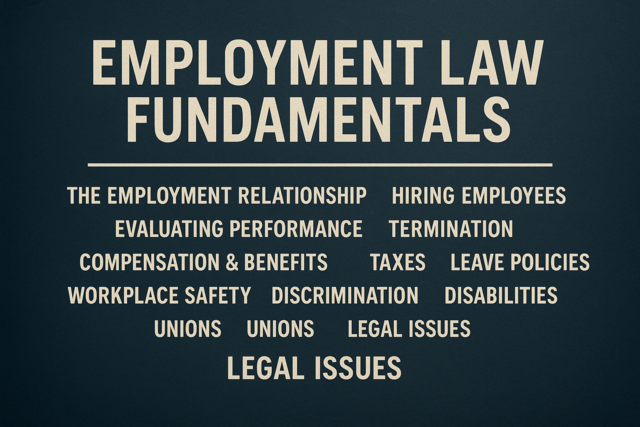The health of the workforce is not always dependent on the management and psychological practices of the workplace they occupy. Environmental factors present in that workplace, such as those that contribute towards safety, can be just as influential. Likewise, it can also be controlled and manipulated in an effort to improve the state of the health of the workforce, the workplace, or both.
This article will look at the role of workplace safety on the health of the workforce, both psychologically and physiologically. Topics of discussion will include the impact safety has on mental health, the expectations that many have, and the benefits it can have for the workforce. Several common workplace hazards and what actions can be taken to improve workplace safety will also be discussed.
What Does Workplace Safety Have To Do With Psychological Health?
There are numerous factors that can have an impact on a person's mental health. They can come from multiple sources-including people, the environment, and chemical substances-and can have varying degrees of influence. The interactions a person has, the places the spend time in, the activities they do, their interests-all can affect the state of their psychological health. Not all of those factors are going to have a completely positive impact, per se, but there will still be an impact of some kind.
When it comes to the workplace, there can be any number of factors and sources that can have an impact on the mental health of the workforce there. If the workplace is toxic or unhealthy, then it's likely going to have a negative effect on the mental health of the people who spend enough time there. Likewise, issues with an employee's psychological health can impact their work environment through their interactions. As with other features of a healthy workforce and workplace, safety and health can feed into one another in equal measure.1 Psychological issues, for example, can impact an employee's decision making and judgement at work, which could lead the to make mistakes and ignore protocols that are designed to keep them safe. The compromised safety of the workplace can then worsen those psychological issues, and the cycle can then repeat.
Many of the expectations that are in place for workplace safety involve legal requirements put in place by state and federal governments. By law, employees are entitled to safe working conditions at their place of employment. This can include protections against hazards (e.g. harmful substances), access to safe tools and resources, and equipment that is safe and up to code.2 Providing such things is largely the responsibility of the employer, and failure to do so can result in serious consequences. Employees expect their employers to comply with workplace safety laws and are not above reporting their employers for violations to the authorities.
There are also some expectations for employees in regards to workplace safety. Employers may be the ones to implement and enforce safety protocols in the workplace, but it's the employees who are expected to follow them on a day to day basis. Any kind of safety protocols that are in place will not have that much of an impact if members of the workforce don't comply. If they're not followed, then the workforce cannot benefit from the protections they offer and are actively putting their mental and physical health at risk.
Workplace safety is one of the most important components of a healthy and happy workforce. The benefits that it offers employees and employers go beyond simple protections from threats and hazards that can do both physical and mental harm at work. When there are proper safety practices in place and they're being followed, there's a significant decrease in the risk of harm for anyone present in the workplace. That includes employees and employers, but also customers/clients and any person who has a reason to be in the workplace at any given time. By having some kind of workplace safety practices in place, safety itself can be preserved.
It should be noted that the benefits for workplace safety do not act like a motivator in the same way that other healthy workforce features do. Businesses do not implement workplace safety practices for the benefits it can offer, but because of the simple fact that people don't want to get hurt at work. No one really enjoys being in place that could potentially harm or even kill them, whether it's their place of work or the place they shop. They are implemented because it's common sense to do so, but that doesn't detract from what they can offer.
Curbs Turnover, Absenteeism-As mentioned, people don't enjoy being in places where they can get hurt. They try to avoid those places and only spend as much time there as is required of them, no more. When that place happens to be your place of employment, you tend to look for reasons to not be there. Unsafe workplaces regularly have higher turnover rates and more attendance issues that are brought about by the lack of safety.4 Most of this is a result of injuries and illness caused by unsafe conditions, but there are also people who will intentionally skip work as a means of keeping themselves safe. When proper safety practices are put into place, turnover and absence rates tend to decrease.
Fewer Injuries And Accidents-When workplace safety standards are properly implemented and followed, they are able to do what they are supposed to do. The risk of someone getting hurt decreases significantly when safety is prioritized. This in turn reduces secondary effects that can develop after an accident, like repair costs, production delays, lawsuits, and formal investigations.5 Accidents are simply disruptive to normal business productivity and to the lives of the people involved; preventing them prevents all of the damage that comes with them.
Improved Morale And Satisfaction-When people feel safe, they tend to be happier. Employees in safe workplaces do not have to worry about getting hurt, and that has a significant impact on their mental state. The atmosphere of a safe workplace is usually much more positive than those that are unsafe. This then influences employee morale, satisfaction, and psychological health-all of which can have further influence over their productivity, performance, and engagement at work.
There are certain hazards that can impact safety that are present in nearly every kind of workplace. These hazards develop as a direct result of a lack of safety protocols and enforcement, or as a byproduct of events brought on by that lack of safety. Each one can have a different impact on the workforce and their mental state, which in turn can have an impact on their performance and how they behave at work. As mentioned earlier, this can cause unsafe working conditions and impacted psychological health to feed and influence one another without much difficulty. Doing so produces more issues and reduces the overall health of the workplace and the business as a whole.
Stress-Stress is by far the most common and influential hazards that can be present in the workplace. It can come from anywhere or anything, and can affect people mentally, emotionally, and physically. The biggest threat that stress poses to employees' mental health and safety is that it impedes people's ability to focus.6 It's a distraction that can cause a person to make potentially dangerous mistakes, leading to accidents where they and/or their peers can be injured or killed.
Structural Threats-Structural threats applies to issues with the building the business is located in and its components. The stability of the walls, roof, and floors, for example, could pose a threat to workplace safety if they are not up to code and cannot handle the normal wear-and-tear of the business' operations. Additional threats could include utility components like wiring and piping.
Accidents-Depending on the nature of the industry you work in, accidents could be a very common threat to employee safety. Professions where there is a high risk of harm by their very nature-e.g. law enforcement, firefighting, military, etc.-will usually have additional safety measures in place to help reduce that risk. However, that risk never truly goes away and what reduction is there is highly dependent on employee compliance.
It's always a good idea for businesses, employers, and employees to take action to improve workplace safety and reduce potential hazards. Putting in the effort to make improvements often has a positive effect on the physical and mental health of the workforce and the workplace. Those who want to generate a significant improvement in safety may want to consider using multiple methods at once, including those listed here.
Legal Adherence-One of the easiest ways to improve safety is to follow any and all safety laws that are appropriate to the workplace in question. This includes OSHA regulations set on the federal level and those established on the state and local levels. You should already be doing this, regardless of what your role in the workplace is (e.g. employer, employee), but not everyone does. You can find out what regulations your workplace should be following by checking out OSHA's website at www.osha.gov
Training And Education-Training and education are always good ways to improve any healthy workforce and workplace feature, and that still applies here. With workplace safety, it's best to make sure that any key staff members (e.g. managers) who may be required to enforce safety policies receive regular training to keep them up-to-date.8 That training should include things like emergency response, first aid, and education on mental health issues that may come into play during a safety issue. All employees, regardless of position or rank, should also receive the appropriate safety education necessary for their workplace.
Health And Safety Programs-Workplace health and safety programs can be vital to maintaining the safety of the workplace. They can be sources of education and other resources that employees may need for the sake of their mental and physical health.9 These programs can be customized to the needs of the workforce, the workplace, and the business. They may even be customized to combat the specific hazards, e.g. stress, that are actively impacting workplace safety and employee health.
Regular Inspections And Upkeep-To curb the effects that workplace hazards can have on the workforce, businesses should conduct regular inspections of items like equipment and resources. This can help in making sure that necessary components of the business are kept in good condition to prevent accidents and harm caused by damaged or faulty equipment. General upkeep of the workplace to prevent hazards-such as those brought about by poor housekeeping-from causing issues is also recommended.
Reporting And Recording-Businesses should implement a system in which employees can report safety issues to management without fear of reproach. OSHA does have a similar system for regulation violations, but an internal reporting system can help businesses out by bringing issues to the attention of those who can remedy the situation.10 There should also be a formal system in place to document any instances, including accidents, that do occur in the workplace. This can help businesses identify areas of concern and any kind of trends in safety errors that may be present in the workplace before they can have any kind of impact on employees.























